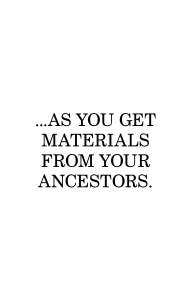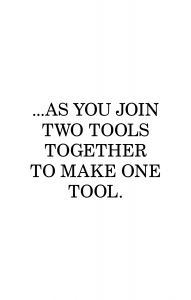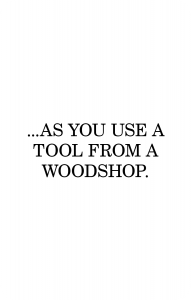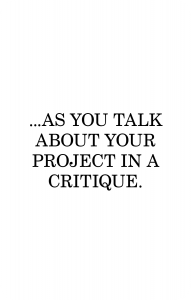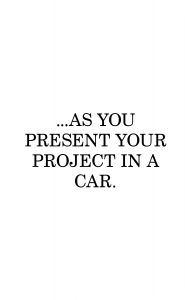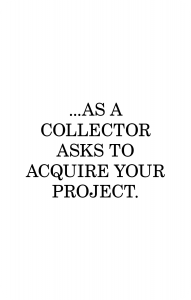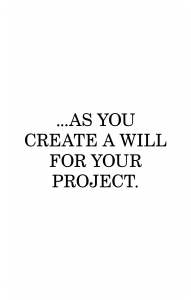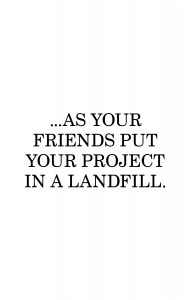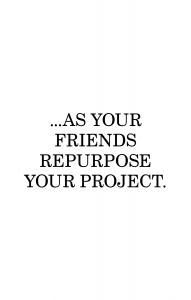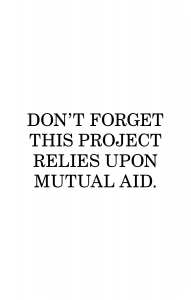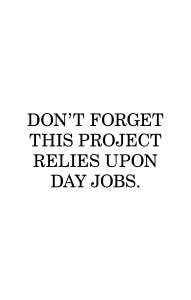Narration is the term we use for the way a project is represented. We narrate our projects when we create a website, show documentation, give a lecture, talk to friends, or in any way describe our projects. Artists and designers who desire that their projects be written and spoken about in a manner that aligns with their intentions can work with communities, businesses, and institutions to shape each project’s narration. We believe that by actively taking responsibility for narration, we can impact the life cycle and circulation of our projects.
NARRATE: Who narrates the project?
Narration is the term we use for the way a project is represented. We narrate our projects when we create a website, show documentation, give a lecture, talk to friends, or in any way describe our projects. Artists and designers who desire that their projects be written and spoken about in a manner that aligns with their intentions can work with communities, businesses, and institutions to shape each project’s narration. We believe that by actively taking responsibility for narration, we can impact the life cycle and circulation of our projects.
Artists often model the narration of their projects on the presentations and writing of art historians and critics. Art History and Criticism emerged as academic disciplines in Europe and North America in the late 19th Century to create a rational basis for art appreciation. It wasn’t until the mid-20th century in the United States that an artist became a common figure on campus, teaching art and speaking about their own work. Many artists and designers perpetuate the modernist proposition of art speaking for itself by saying that their projects need no explanation. This allows others to account for and interpret their projects. In school, students may experience tension as some teachers support the legacy of the autonomous art object while other teachers require that their student’s writing reflect a research-based practice. Narration is a site of contestation over who speaks, about what, and in which context.
Michel Foucault in his essay What is an Author (1969) addresses the relationship between author and receiver, work and context, calling into question the assumption that the maker determines the work’s meaning. He asks: “What are the modes of existence of this discourse? Where has it been used, how can it circulate, and who can appropriate it for himself? What are the places in it where there is room for possible subjects? Who can assume these various subject functions?” He continues this line of thought by posing this final question: What difference does it make who is speaking?” Hito Steryl reminds us that the use of the English language in press releases written by art interns is “an accurate expression of social and class tensions around language and circulation within today’s art worlds and markets: a site of conflict, struggle, contestation, and often invisible and gendered labor.”
We ask: How can we create work stories that reflect the world we want to live in? By including production practices and supply chains in the narratives we share, a wide range of choices for organizing work, compensating workers, and producing art become visible and open to contestation (Proposition Number 5). What might we hear or read in this narration, that is often left out of contemporary work stories? We might narrate our art contexts, not just our artworks, including work stories in 1) community, 2) collaboration, 3) labor, transfer, and 4) support structures.
- We might acknowledge the ways in which work stories change in relationship to geographic, identity-based, or professional communities. We might practice our re-telling in front of the people who experienced it, and incorporate their reactions in our work stories. Narrating a project beyond the scale of experience is difficult because we must choose which aspects of the project to reveal from the multitude of relationships, conflicts, and contradictions in our supply chain. Talking about a project within a community might come across as an intimate re-telling of a shared experience from one person’s perspective, or this sort of public retelling might feel unnecessary because the listeners already know the story. For example, Bill T. Jones presents his work in three performance modalities, Jeanine Oleson asked performers to recreate a performance from memory in Hear Here, and Adrian Piper publicly corrects art critics to maintain her work story.
- We might include voices of co-laborers or collaborators in our narration. Historically, many important women in collaborative teams have been excluded from narration and therefore public recognition. These women gained visibility as support figures or, in some cases, remained invisible, although they were the actual, unattributed creators of the work. For example, Artemisia Gentileschi, Camille Claudel, Jeanne-Claude, Ray Eames, and Ellen Wexler were barely recognized for the majority of their careers. The inclusion of collaborators and co-laborers can take many forms: video, co-presenting, co-writing, or agreed upon quotations. Gayatri Spivak writes that, “the principle of quotations or citations is central: letting others speak in my text is not only a way of inscribing my work in a collective political movement. It is also a way of practicing what I preach… Letting the voices of others sound through my text is therefore a way of actualizing the non-centrality of the “I” to the project of thinking.”
- We might narrate the ways in which our projects were produced, including labor and transfer practices. When arts discourse includes the labor practices of production, listeners and readers can debate the possibilities and problems so familiar to neoliberal economies (unpaid internships, precarious adjunct labor, unpaid exhibition invitations, debt-backed education) and practices rooted in solidarity economies (sliding-scale pricing, worker cooperatives, intentional communities, and free education). See each section of the Of Supply Chains texts for ideas about how to narrate each phase of the supply chain.
4) We might pay tribute to the support structures which allow us to make our projects, including our friends and family members and networks of mutual aid. We might contribute to the social practice of acknowledgement, familiar to authors who follow this format in books, thanking the people who have made the project possible. Solidarity economies may then be articulated not merely as “alternatives” to an unchangeable economy, but as already existing practices that are thriving around the world and in the arts sector as well, as solidarity art worlds.
Artists call attention to the conventions of narration by creating performance lectures, by presenting multiple perspectives by speaking as a group, and by adjusting the format of the lecture itself. For example, Andrea Fraser in her performance Official Welcome (2012) narrates a context in which an artist is introduced and gives an artist talk Mary Walling Blackburn refuses to create standard documentation of her work, Future Farmers and Peggy Buth create and disseminate personal research booklets for each project, and the Yams Collective gives public presentations with over ten members debating one another’s narratives. We at BFAMFAPhD have refused uncompensated invitations to appear in person, offering instead existing narratives about our work in forms that have been supported through grants or other
means.
Artists also shape narration by creating their own institutions and networks that publish, distribute, and represent artist’s projects directly. For example, Art + Feminism was founded in 2014 by Siân Evans, Jacqueline Mabey, Michael Mandiberg, and Laurel Ptak, to organize Wikipedia Edit-a-thon’s that both ensure women in the arts are included in this online encyclopedia, and to increase the percentage of Wikipedia’s contributors who are female. The visual artists Anton Vidokle and Julieta Aranda founded e-flux in 1996 as a paid service to distribute press releases and to fund project spaces, events, and publications. The poet Kenneth Goldsmith founded UbuWeb in 1996 to freely distribute avant-garde materials regardless of their copyright status, and a group of artists including Sol Lewitt and Lucy Lippard founded Printed Matter in 1976 to make space for artists’ publications; this led to Printed Matter’s founding of the NY Art Book Fair in 2005. Antonio Serna’s project Documents of Resistance reveals the lack of narration about the impact artist of color had on art activism in the 1960s.
As we recognize the power of narration to make practices visible and open to contestation, we also recognize the challenges in representing supply chains. We have seen the difficulty people have in tracing supply chains in other fields, including common practices such as “acknowledgements” in literature, “credits” in film, music/dance, and emergent practices like supply chain diagrams in service design, videos of construction in architecture, and lists of participants in visual art projects. Typical work stories are shaped to create author’s privilege, originality, and to accrue cultural capital or monetary value.
Even when artists co-create with others outside of their fields of expertise in what is called socially engaged or embedded practice there are few cultural frameworks to narrate what is truly shared, enacted, transformed, and sustained. The narration of Project Row Houses, initiated by Rick Lowe, is an example of how complicated it can become for an artist to be the spokesperson for a project that has many actors.
We wish to acknowledge that supply chain narration is both our central focus and also an uncharted path in the visual arts. We ask: how can we navigate our projects’ supply chains in ways that are both compelling and representative of the projects themselves without undermining the importance of a publics encounter with them? If we approach supply chain narrations as a set of practices and tools in which to emphasize and understand the implications of thinking about projects as sets of social relationships rather than fixed entities produced by solitary authors. then we support and reproduce solidarity art worlds.
The project can be narrated by the author, or by friends and family, community, staff in a business or public institution, or with members of a commons. For example, an author might give a presentation, friends and family might talk about the project, members of a community might write about a project, staff at a business might write text for the project website, staff at a non-profit might give a presentation about a project, or members of a listerv like Nettime might talk about the project. An author might work collaboratively with the groups above, or they might approve institutionally-produced narrations before they appear in public. The larger the institution, the more likely the institution is to control the written and spoken work stories related to any project.






